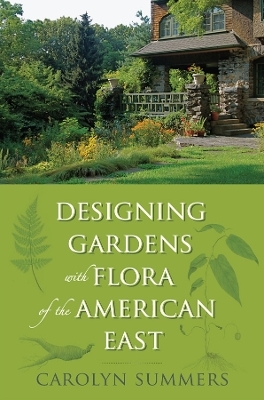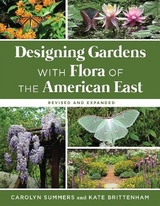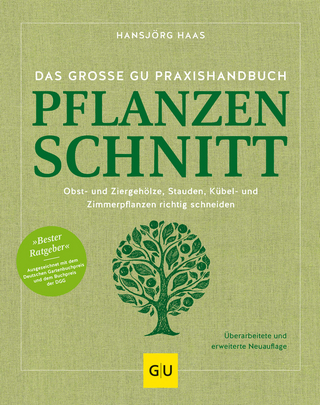
Designing Gardens with Flora of the American East
Rutgers University Press (Verlag)
978-0-8135-4707-7 (ISBN)
Gardeners, with all good fortune and flora, are endowed with love for a hobby that has profound potential for positive change. The beautifully illustrated Designing Gardens with Flora of the American East approaches landscape design from an ecological perspective, encouraging professional horticulturalists and backyard enthusiasts alike to intensify their use of indigenous or native plants. These plants, ones that grow naturally in the same place in which they evolved, form the basis of the food web. Wildlife simply cannot continue to survive without them-nor can we.
Why indigenous plants, you may ask? What makes them so special to butterflies and bees and boys and girls? For Carolyn Summers, the answer is as natural as an ephemeral spring wildflower or berries of the gray dogwood, "As I studied indigenous plants, a strange thing happened. The plants grew on me. I began to love the plants themselves for their own unique qualities, quite apart from their usefulness in providing food and shelter for wildlife.
Emphasizing the importance of indigenous plant gardening and landscape design, Summers provides guidelines for skilled sowers and budding bloomers. She highlights . . .
The best ways to use exotic and non-indigenous plants responsibly
Easy-to-follow strategies for hosting wildlife in fields, forests, and gardens
Designs for traditional gardens using native trees, shrubs, groundcovers as substitutes for exotic plants
Examples of flourishing plant communities from freshwater streams to open meadows
How to control plant reproduction, choose cultivars, open-pollinated indigenous plants, and different types of hybrids, and practice “safe sex in the garden
From Maine to Kentucky and up and down the East Coast, Designing Gardens with Flora of the American East lays the "gardenwork" for protecting natural areas through the thoughtful planting of indigenous plants. Finally we can bask in the knowledge that it is possible to have loads of fun at the same time we are growing a better world.
CAROLYN SUMMERS is an adjunct professor for continuing education at Westchester Community College and provides technical assistance to the Native Plant Center, an affiliate of the Ladybird Johnson Wildflower Center.
Preface
Abbreviations
Chapter 1 Why Should We Garden with Indigenous Plants?
Chapter 2 Wildlife in Field, Forest, and Garden
Hosting Butterflies and Moths
Feeding Bees
Attracting Pollinators
Bringing Up Birds
Links Between Aquatic and Terrestrial Food Webs
Maintaining Wildlife in Your Garden
Uninvited Guests
The Wild Flora Sanctuary
Chapter 3 “Safe Sex” in the Garden
Understanding Scientific Names
Plant Reproduction
Science for Educated Plant Consumers
Principles of “Safe Sex” in the Garden
Chapter 4 Replacing Common Invasive Plants with Keystone Plants
Trees
Shrubs
Vines
Ground Covers
Perennials and Grasses
Invasive, Nonindigenous Plants You Will Not Find in a Nursery
Chapter 5 American Horticulture and Indigenous Plants: A Brief History
Americans Abroad
Americans at Home
“Paradise” Lost
Chapter 6 Ecological Landscape Design with Keystone Plants
Basic Design Principles
Foundation Gardens
Trees in the Landscape
Perennial Borders
Screening and Hedges
The New (Reduced) Lawn
Habitat Elements
The Suburban Home
The Townhouse
The Subdivision
The Corporate Campus
Chapter 7 Design Ideas Drawn from Indigenous Plant Communities
Habitats or Plant Communities
Forest Fragments and Woodland Edge
Successional Plant Communities
Freshwater Streams, Ponds, and Other Wetlands
The Seashore
Afterword
Appendix A: Keystone Plants
Appendix B: Circumboreal Plants
Appendix C: Perennials for Season-long Bloom
Appendix D: Berries for Birds
Appendix E: Dioecious Plants
Appendix F: Indigenous Annuals and Biennials
Appendix G: Indigenous Heirlooms
Appendix H: Street Trees
Appendix I: Indigenous Plants Suited for Formal Gardens
Appendix J: Indigenous Plants Suited for Asian Designs
Appendix K: Fragrant and Aromatic Plants
Acknowledgments
Bibliography
Index
| Erscheint lt. Verlag | 30.3.2010 |
|---|---|
| Zusatzinfo | 87 illustrations. 16 color and 62 black and white |
| Verlagsort | New Brunswick NJ |
| Sprache | englisch |
| Maße | 152 x 229 mm |
| Gewicht | 313 g |
| Themenwelt | Sachbuch/Ratgeber ► Natur / Technik ► Garten |
| ISBN-10 | 0-8135-4707-5 / 0813547075 |
| ISBN-13 | 978-0-8135-4707-7 / 9780813547077 |
| Zustand | Neuware |
| Haben Sie eine Frage zum Produkt? |
aus dem Bereich



